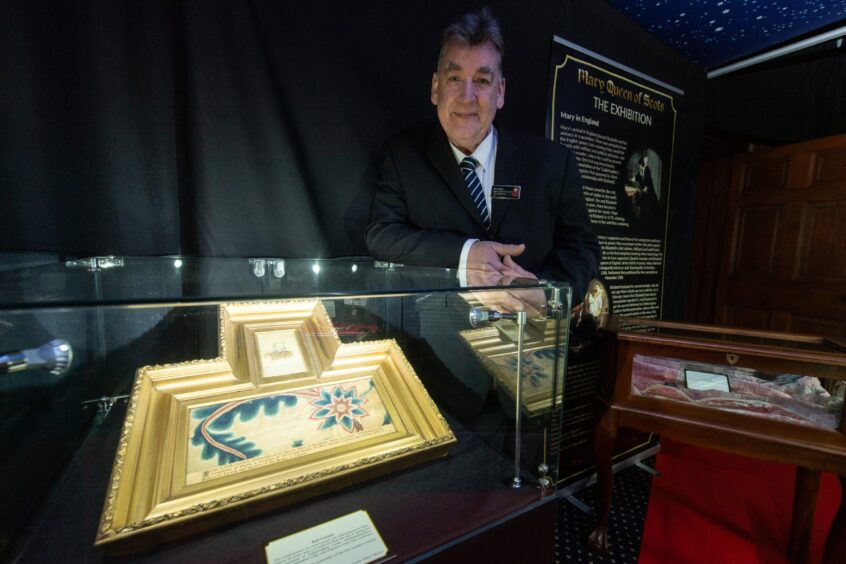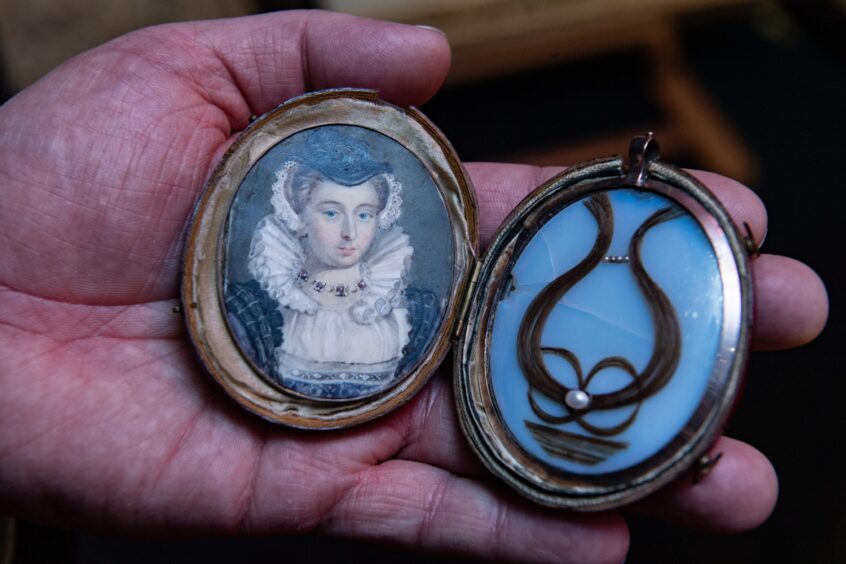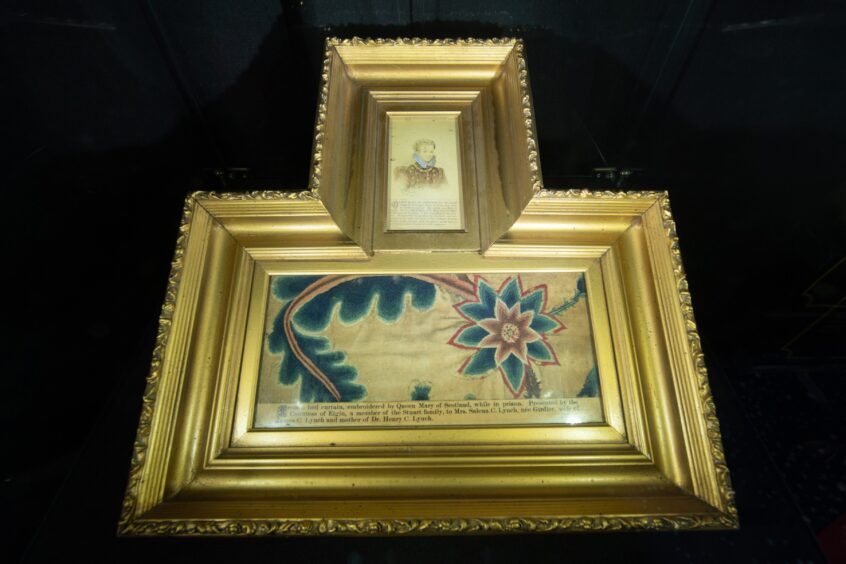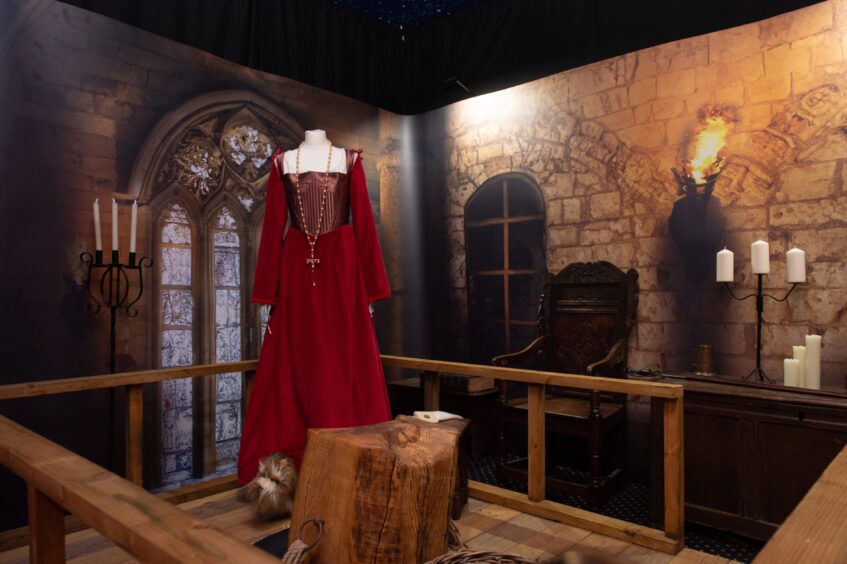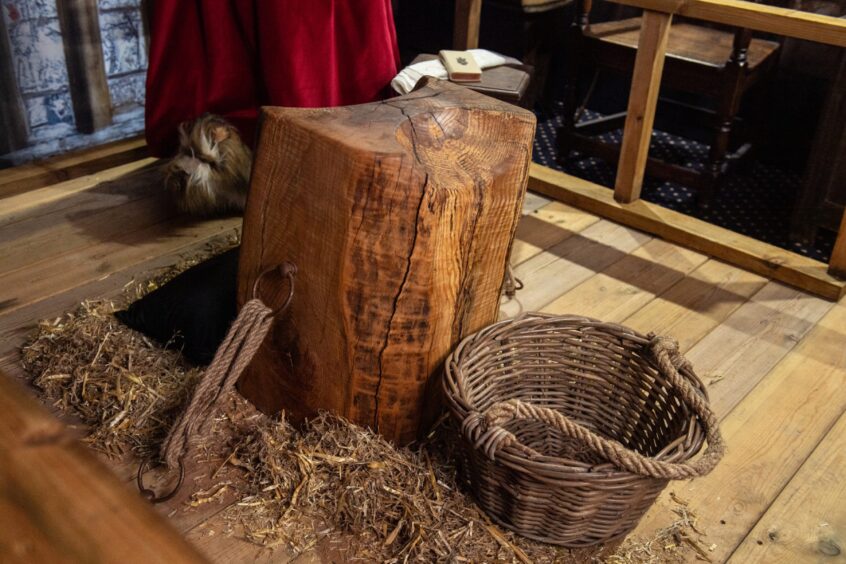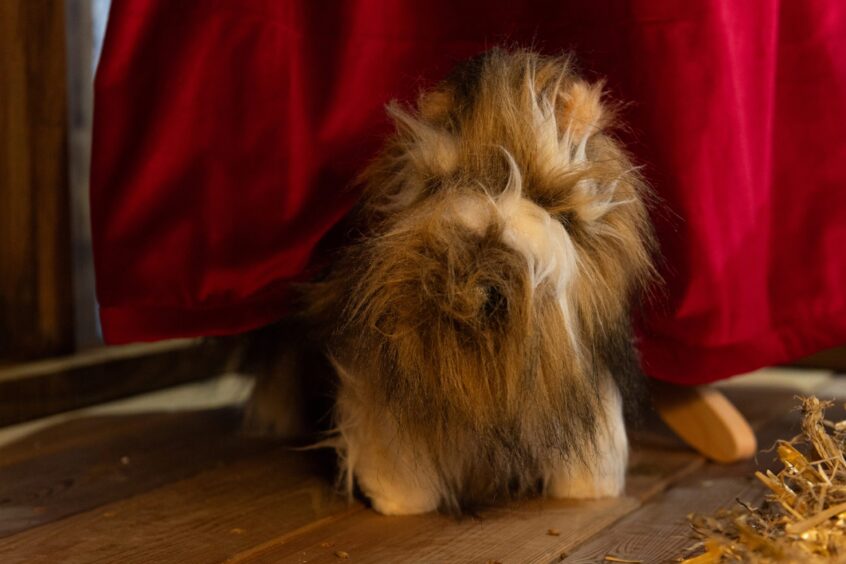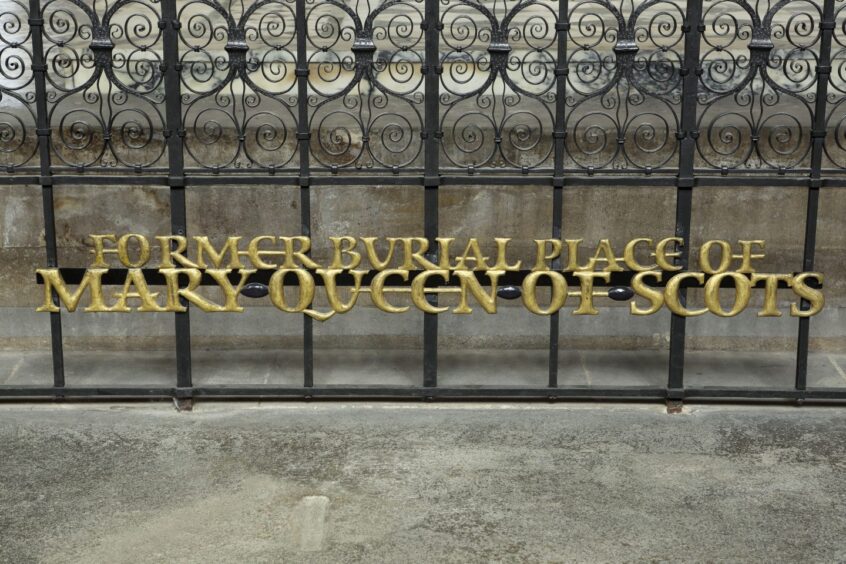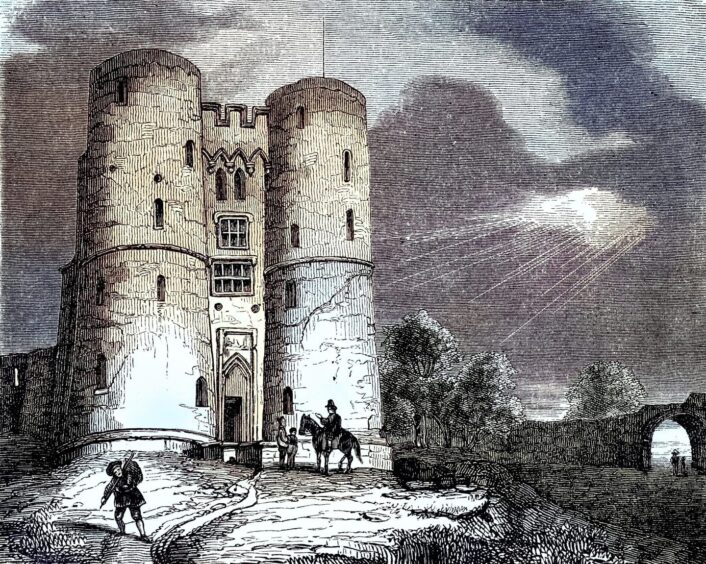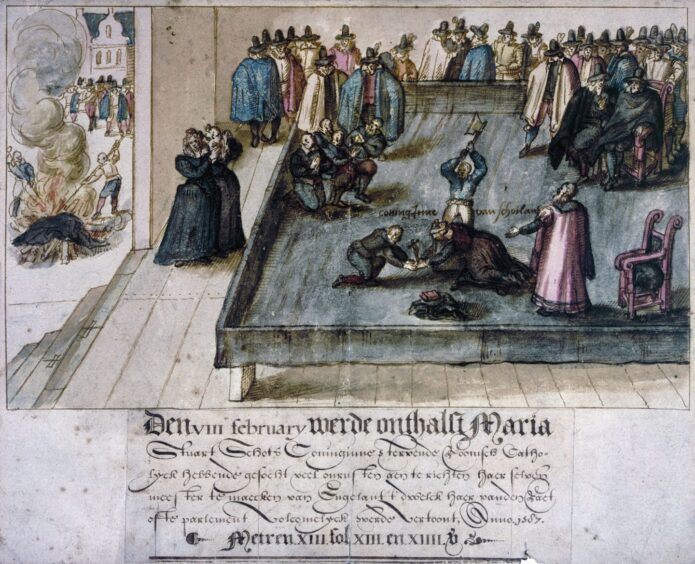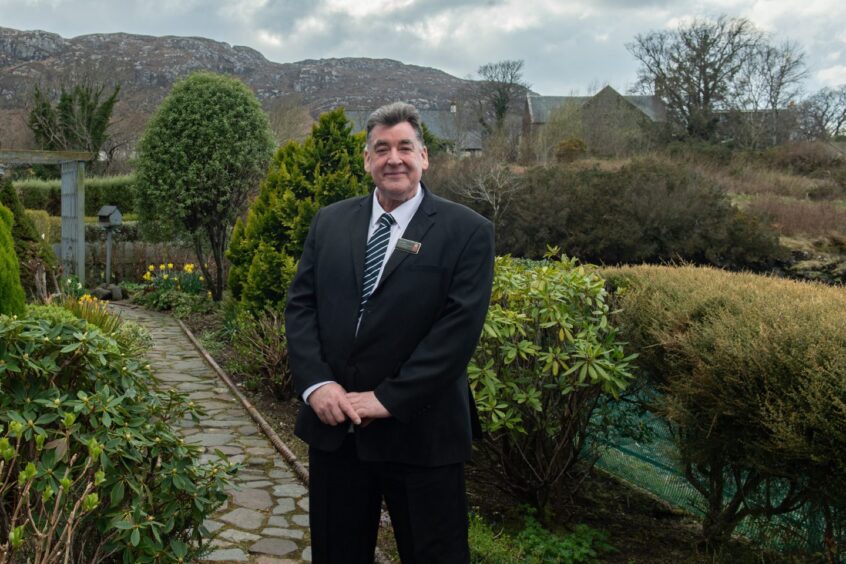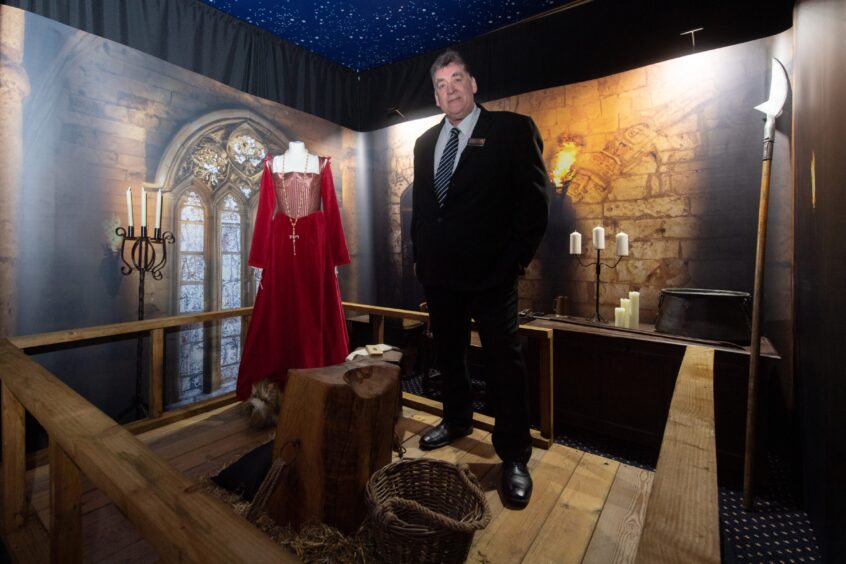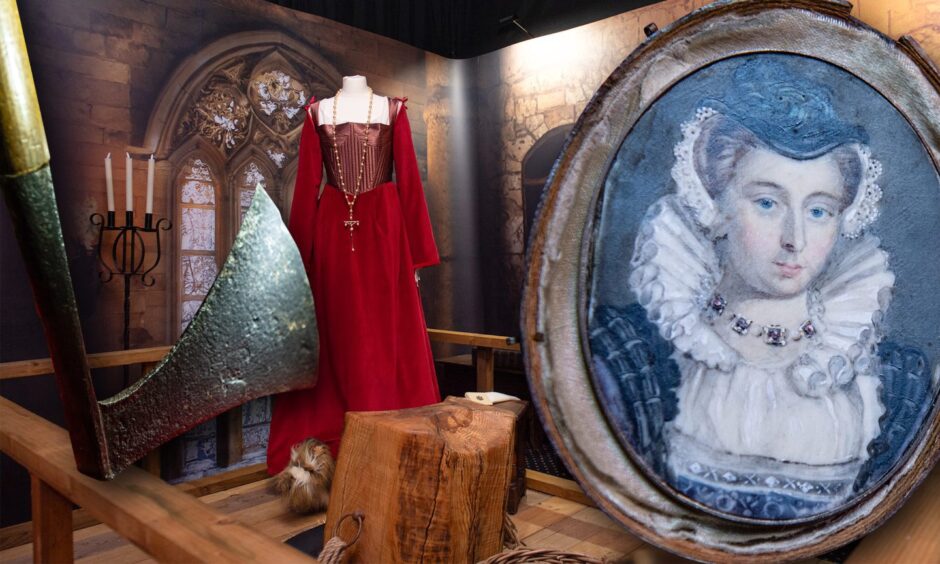
A remarkable collection of artefacts relating to Mary Queen of Scots has gone on display in a new exhibition at Pool House, Poolewe.
Highlights include a lock of her red-gold hair, and a section of bedcurtain embroidered by Mary herself not long before her execution.
The objects are from the private collection of Fife man John White, a passionate collector with a lifelong interest in history.
Atmospheric exhibition of Mary Queen of Scots treasures
John, originally from Kingskettle, now resident in Milton Keynes, has used his collection of Mary Queen of Scots memorabilia to create an atmospheric exhibition to lead visitors through her life to the day of her execution at Fotheringhay Castle, Northamptonshire on February 8, 1587.
He hopes to tour the exhibition further south, but for the moment it’s in the dining room of Pool House, a former hotel now offering historic and ghost tours round the fascinating objects held in its guest rooms.
The 21 x 30 ft dining room has been draped and darkened to lead visitors through time and space into Mary’s life and death.
Interpretation boards tell the story of her life, interspersed with cabinets of exhibits.
Stunning reproductions of Mary Queen of Scots jewellery and gowns at exhibition
They include stunning reproductions of the jewellery worn by Mary; books and documents; a beheading axe of the period; exact reproductions of the clothes she wore on the fateful day; and various objects John procured from the film set of the 2018 Mary Queen of Scots movie, starring Saoirse Ronan and Margot Robbie.
The locket came from a large private collection.
The owner had been selling the hair at £400 per half inch, but agreed to sell the remaining lock to John, for an eye-watering sum John would prefer not to reveal.
Authentication process
John says he has a lot of experience in authenticating objects he’s interested in.
“I look at who I’m buying from and their credibility and trustworthiness. I only buy from reputable sources where I’m entitled to my money back.”
John’s pride and joy is a section of bed curtain, believed to have been embroidered by Mary while awaiting execution at Fotheringhay Castle.
He’s happy to say he paid £5,000 for it, and feels it was a bargain.
Mary was a skilled needlewoman
He said: “Mary was a very talented embroiderer and did a lot over the 19 years of her imprisonment.
“There are many examples by her in museums across the UK. I got this one when it came up at a Glasgow auction house, and it’s one of my top artefacts.
“The colours are still vibrant, and there’s no other part of the bed curtain in existence now.”
The exhibition culminates in a reproduction of the scene in the Great Hall of Fotheringhay Castle in the moments before Mary’s execution.
She had taken off her black robe to reveal a crimson dress underneath, red being the colour of martyrdom.
Exact reproductions
The dress is an exact reproduction, from a contemporary painting, as is the beautifully crafted rosary and crucifix.
A beheading block takes centre stage, and has its own remarkable story.
It’s not original, in fact it’s contemporary. A local farmer offered to make it for John, and got to work with a chainsaw and a block of oak.
She farms about 20 miles from Fotheringhay Castle.
The oak was a sapling 500 years ago
John realised that the tree she worked with was around 500 years old, and most likely a sapling at the time of Mary’s execution.
He said: “The farmer didn’t know anything about Mary, but to me it seems like an amazing link to the past.”
Also on the execution set is Geddon, Mary’s faithful Skye terrier, peeking out from her skirt.
John said: “They didn’t know he was there, and after the body fell to the floor he was found underneath the dress, covered in blood.
“He was howling, very upset and wouldn’t leave the body. He lay between her severed head and shoulders.
“Within two weeks he was dead. I suspect they killed him too.”
Mary’s internal organs were interred within the grounds of Fotheringhay, and her body taken to Peterborough cathedral.
Her head remained on a cushion at one of the windows of Fotheringhay for several weeks.
“When her son, James VI and I became king he had her moved to Westminster Abbey where she lies within a few feet of Elizabeth,” John said.
“Even though Elizabeth I had her executed, they both lie together in death.”
John’s emotional journey in creating the exhibition goes back to his childhood
John says putting together the exhibition was a long and at times emotional journey for him, stemming back to his youngest days.
“I was given a book on the history of Scotland when I was a boy and there were a few pages about Mary, I found her life story fascinating.
“I started to collect a few pieces over the years, and it grew from there.
“I live not far from Fotheringhay and have visited what remains of the castle a few times.
“You stand there and get a feeling of how things would have looked, what she might have thought.
How Mary Queen of Scots was calm to the end
“She was very calm right up to the end. I think she was thankful to go, she was 44 and living in the damp castle had taken its toll on her health, she’d had enough.
“She thanked everyone for letting her go, saying I won’t be a hindrance to you any longer.”
John started his working life in the Navy and went on to a career in the police and prison service.
But collecting was always his passion, especially Titanic artefacts and memorabilia of which he’s amassed more than 2,000 pieces.
In retirement, what had been a hobby grew into a multi-million pound business, when John discovered an enthusiastic market around the world of companies keen to mount Titanic exhibitions.
He currently has two Titanic exhibitions on tour in the US with a third about to go out.
That leaves him with a mere 500 Titanic artefacts, barely enough for an exhibition, and a bit of time on his hands.
Pool House has family connections to the Titanic.
The ship’s ill-fated captain, Edward Smith was uncle to sisters Liz and Mhairi Harrison who currently run the house, café and tours.
It was this connection that drew John to the house some 25 years ago, and he and the Harrison family became firm friends.
With most of his Titanic collection out on tour, John, Liz and Mhairi came up with the idea of a Mary Queen of Scots exhibition in the house.
“It grew legs and got bigger and bigger from showing a few artefacts to a full exhibition,” John said.
The exhibition will run at Pool House until October 26, after which John is hoping to tour it to Inverness, Stirling and beyond.
Its last resting place will be the Talbot Hotel in Oundle, not far from Fotheringhay.
The ancient inn has remarkable links to Mary’s story.
“When Fotheringhay went derelict within 50 years of Mary’s death, they recovered all the stonework, the windows and staircase and used them when they built the inn,” John said.
The gate which imprisoned her
“You can still look out of the windows she would have looked out of, walk up the staircase she would have walked up.
“At the top of the stairs, there’s a little gateway to the next level, the same gate Mary was told she couldn’t go past.”
John would be very happy to be contacted by any accredited organisations interested in running his exhibition. He can be contacted on 07947 876 837 or at johnwsm401@aol.com
More on Mary Queen of Scots:
How Mary Queen of Scots fell in love with hunting in the Highlands — at a bloody cost to locals
